When Liverpool were crowned as Premier League champions in the 2019/20 season, they conceded 33 goals, a league best. Last year, however, they struggled to maintain this defensive feat due to the injury problems at centre-back. They conceded 42 goals, needing an extraordinary last gasp Alisson headed goal against West Bromwich Albion to secure UEFA Champions League qualification. Without Virgil Van Dijk, Joe Gomez, and Joël Matip in the squad for a large part of the season, the team was vulnerable at the back and ended the season trophyless.
This season, with Matip and especially Van Dijk back fit and firing, Liverpool have kept 21 clean sheets in 34 Premier League games so far, conceding only 22 goals. The campaign went off to a relatively slow start and the Reds found themselves 14 points behind Manchester City in the league in January, albeit with two games in hand. Since then, Liverpool have racked up 41 points out of a possible 45, keeping 11 clean sheets in the process.
After last season’s struggles, the solid defensive structure has been the stepping stone for Liverpool’s success this term. They now find themselves in a unique position challenging on four fronts; one point behind City in the league with four games to go, Champions League and FA Cup finals to contest, and the Carabao Cup already in the locker.
In this tactical analysis, we analyze the key tactics behind Liverpool’s impeccable clean sheet record and defensive organization.
Press / Counter-press
Jürgen Klopp’s Liverpool team have become famous for their suffocating counter-pressing in all areas of the pitch. This strategy is used to disrupt the opposition as soon as possession is lost; in defensive transitions. It entails aggressively pressing the opponents near the ball for quick regains high up the pitch, before the other team can settle in possession. This strategy can then lead to chances and goals, because it often leaves gaps in the opponent’s structure. “The idea when we put pressure is not to force them back and to hold the position and protect behind. No, when we go it’s all about the last two meters of the press. We go there to steal the ball.” – Pep Lijnders, Liverpool Assistant Manager.
Klopp’s counter-press is mainly viewed as an attacking tool to win the ball back and score quickly, but it is actually also a fundamental aspect of the team’s defensive structure; defending from the front. Effective counter-pressing stops the opposition from launching counter-attacks and delays forward progress, sometimes even forcing the ball backwards or out of play. The counter-press does not afford opposing players the luxury of time to make the best decision, leading to a high chance of turnovers.
A team that intends to counter-press have to bear that in mind when they are in possession of the ball. The attacking players must be close enough to the ball and one another to be ready to press immediately after possession loss. Liverpool have become the masters of this under Klopp. They instantly condense the space and form a compact structure. They man-mark tightly, ready to pounce like sharks, while also covering passing lanes and out-balls.
An issue with counter-pressing is the space vacated in behind for teams to exploit that can leave the side vulnerable to counter-attacks. It is all reliant on organization and having the right profile of players to fulfill their roles and have the tactical intelligence to react quickly and instinctively to transitions. In Fabinho, Matip and Van Dijk, Liverpool are equipped with the necessary speed and awareness to cope with opposition counters and balls in behind.
Liverpool lead the league this season in pressures in the attacking 3rd.
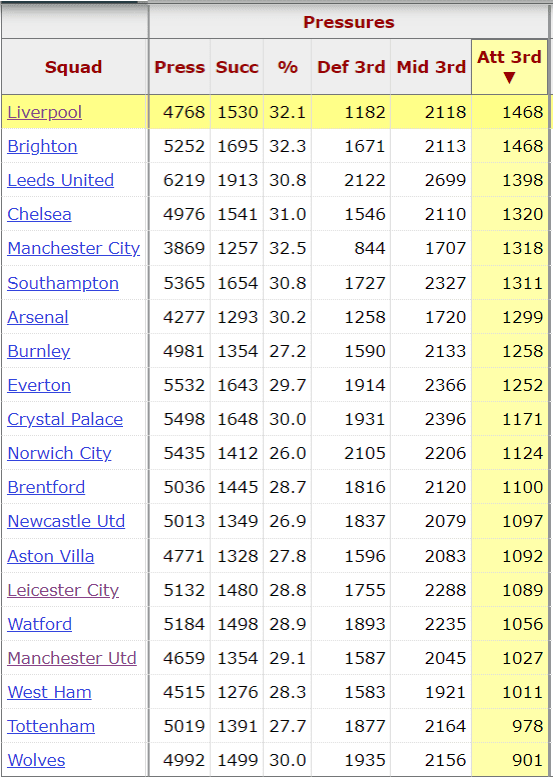
During the 4-0 win against Manchester United in April, Liverpool’s 4th goal was created from a pressing situation. Maguire plays a poor cross to young Hannibal Mejbri on the right and the latter takes a heavy touch. The Liverpool players directly jump and close all the passing lanes and options for Hannibal. Robertson ends up nicking the ball into Jota’s path.
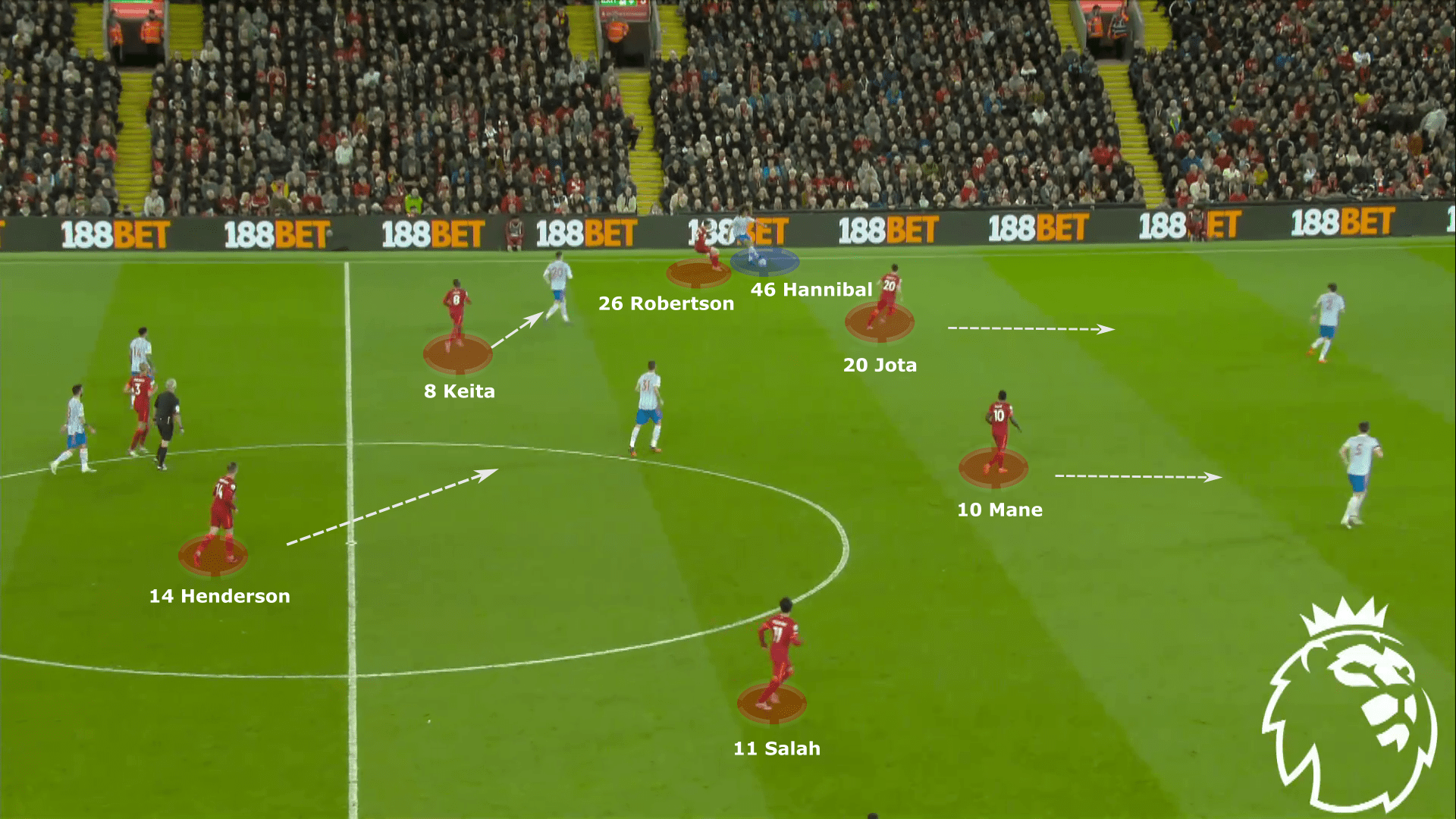
Jota controls the ball and turns towards goal, Salah is already on his bike. Jota glides it through the United defense for the Egyptian to dink the ball over De Gea and into the net. We have heard Klopp repeat time and time again that Liverpool defend to attack.
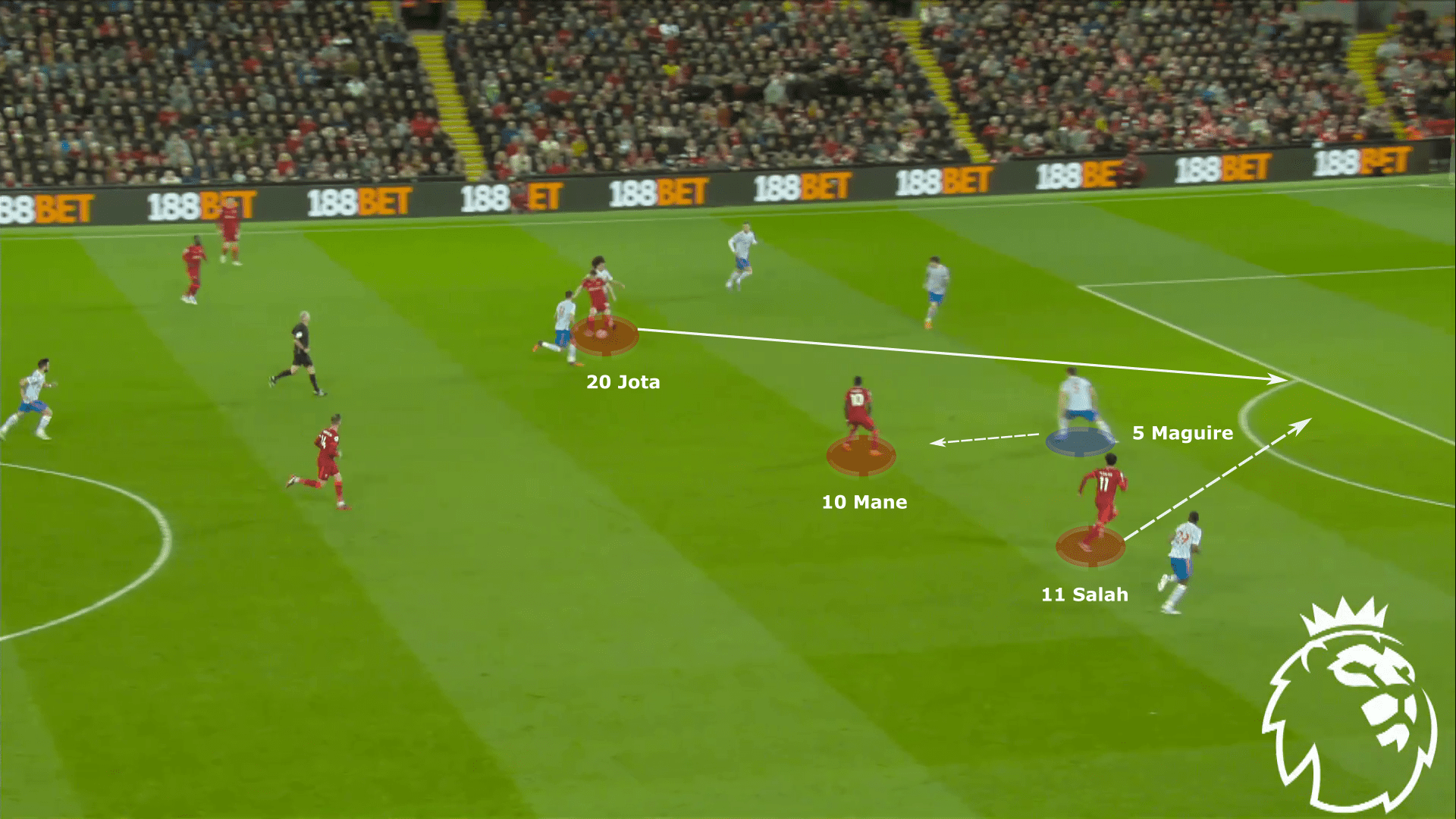
Klopp has also implemented a higher press in the aim of maintaining pressure against opponents who favor shorter build-up play from the back. The team is generally divided into two blocks.:
– The front three, who are responsible to defend five or sometimes six players.
– The block of seven of midfield and defense who’s job is to close down the center and be ready to jump on the front foot.
In the first leg of the Champions League semi-final against Villarreal, Liverpool have lost possession and the counter-press is in the works. The front three as well as Henderson and Thiago quickly close down all the passing lanes and Raul Albiol is forced to return to his goalkeeper Rulli.
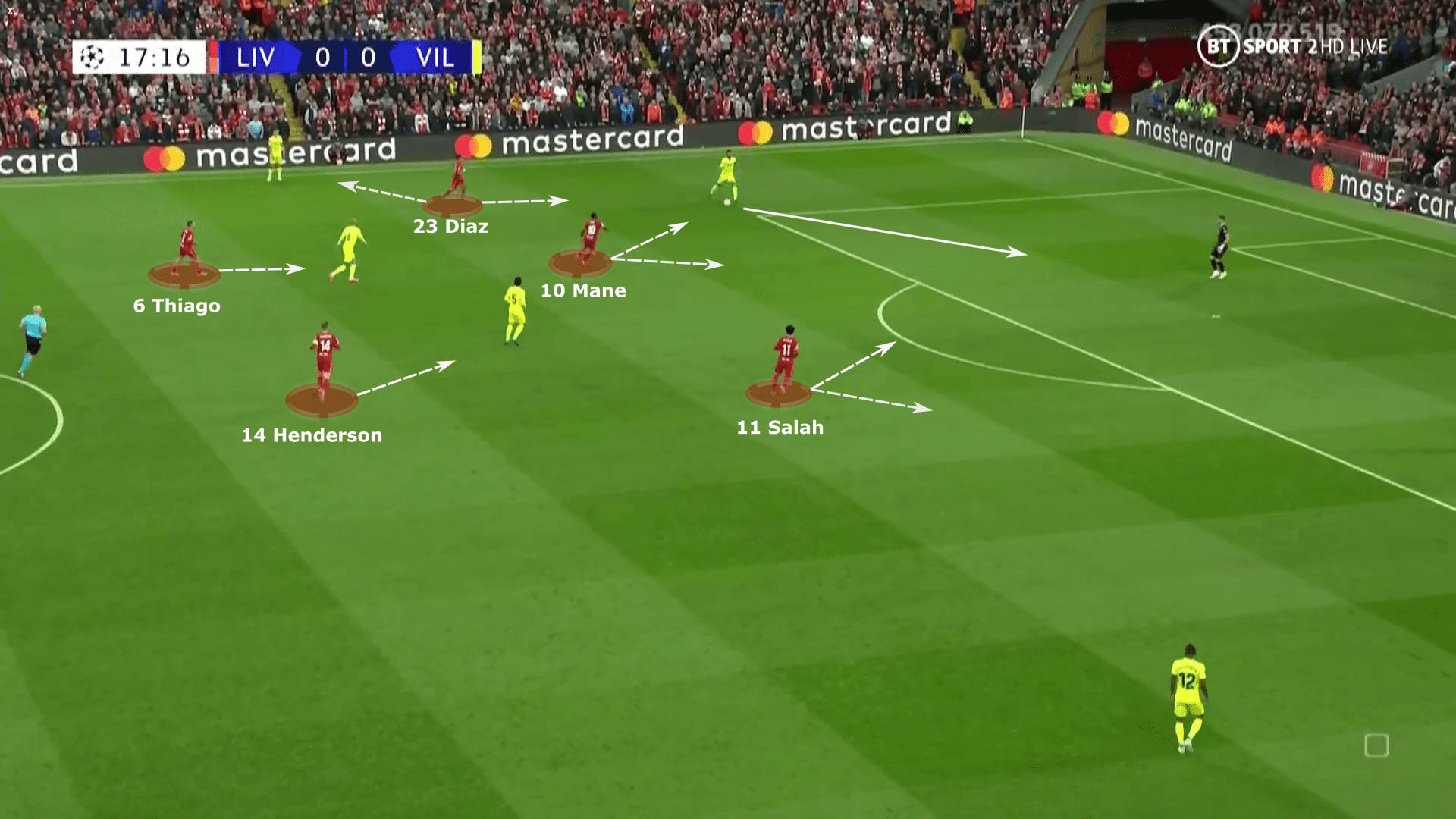
Rulli then feeds it to Pau Torres, and we can see Liverpool’s first block (the front three) are marking five players. Díaz and Salah pressed the centre-backs while Mane covered the goalkeeper and deep pivot. The full-backs were not under immense pressure but Díaz and Salah stopped the direct pass into their feet.
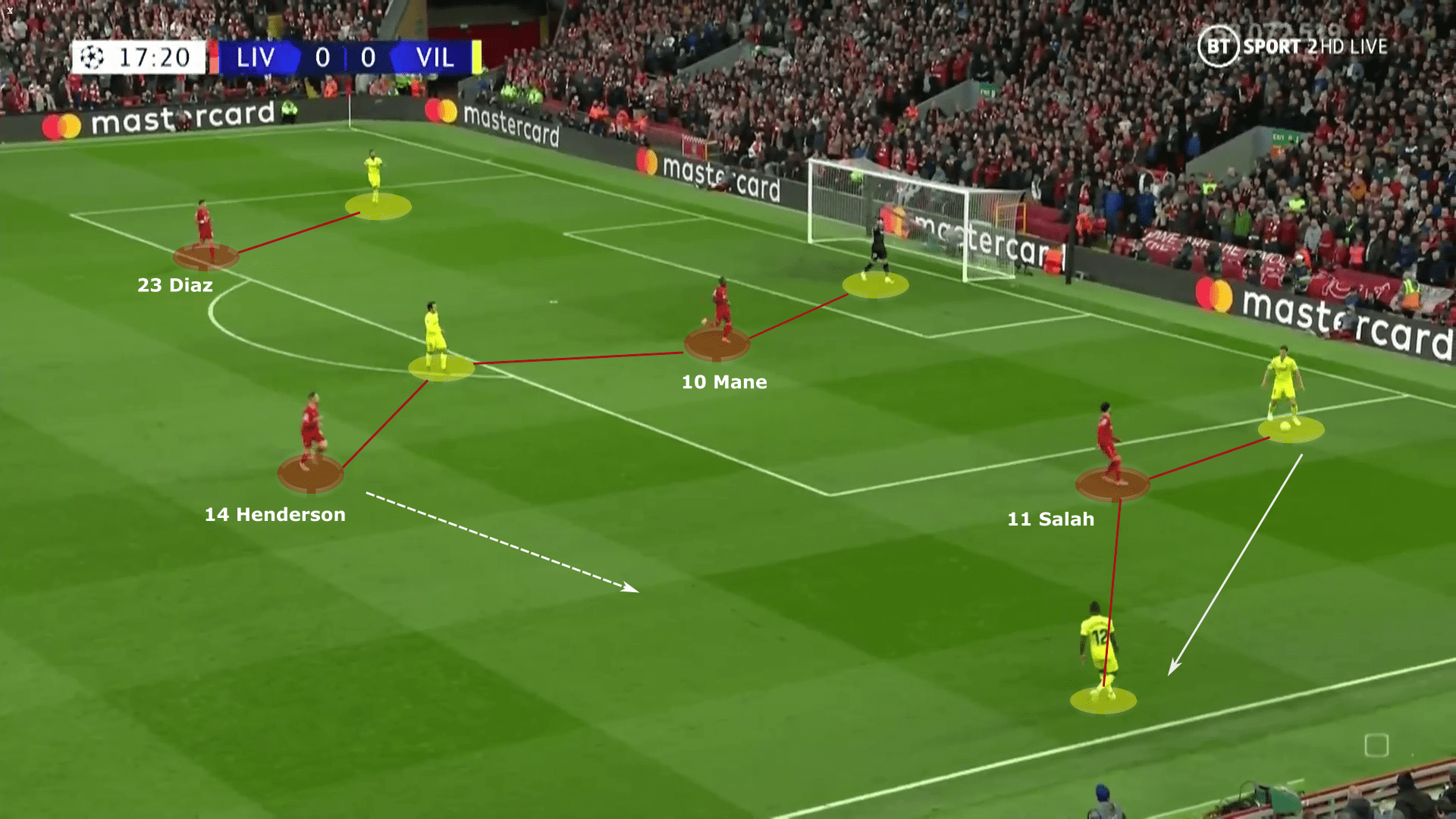
Torres was able to pass it to his left-back over the top of Salah which gave enough time for Henderson to get across and close him down. Fabinho and Alexander-Arnold push up as Henderson manages to put a tackle in and the ball goes out for a throw-in.
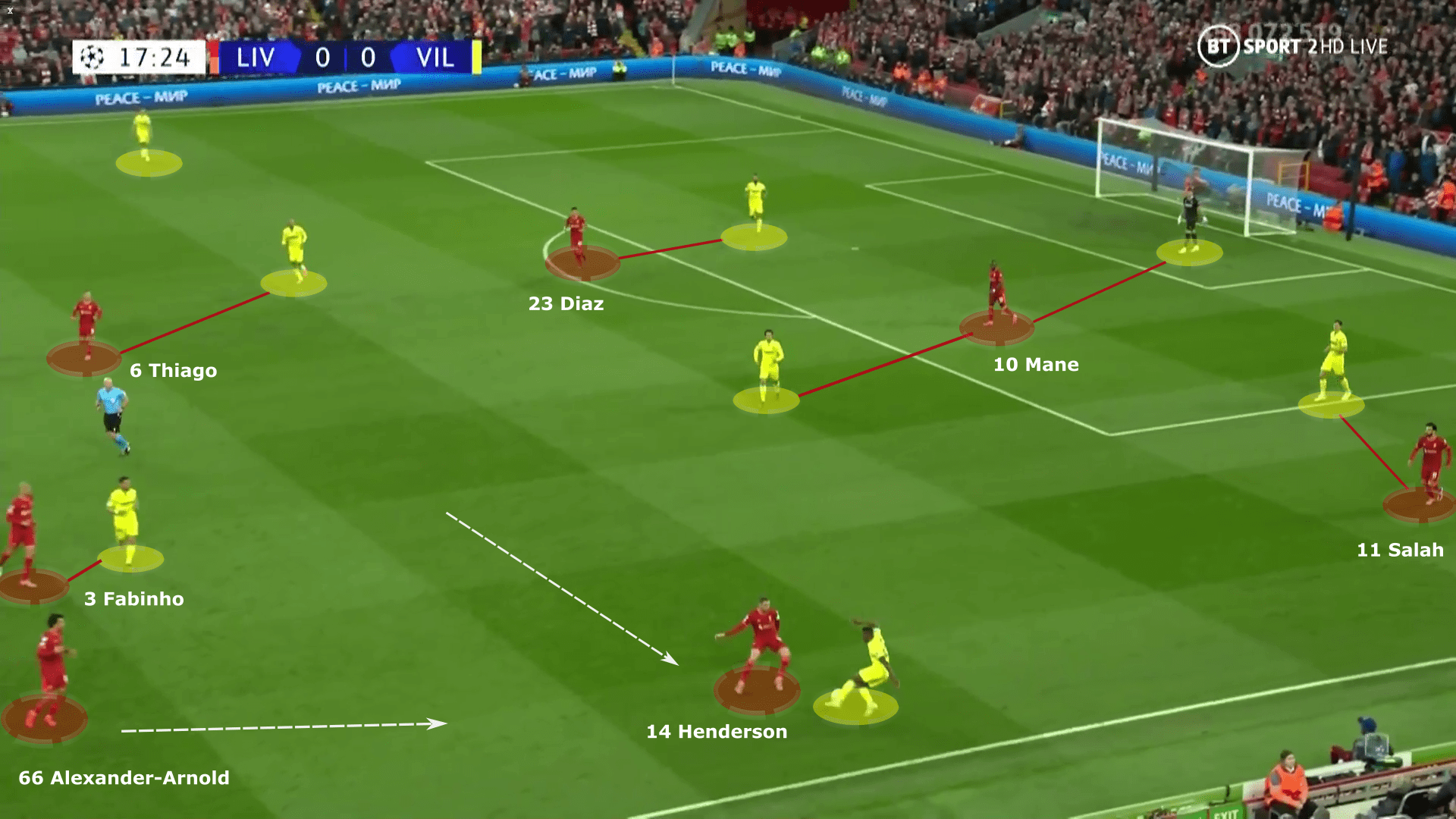
The high line
It’s become very rare to watch a Liverpool game these days without at least one mention of their high line, whether for praise or scrutiny. It is a tactic that has served the team well over the past few years. Liverpool’s high line is dependent on their pressing and on their high energy midfield. It is all connected, one unit from the striker to the goalkeeper.
Liverpool have seen the offside flag waved in their favor a total of 140 times in the Premier League this season – 55 more than next-best Manchester City. No players have provoked more offsides this season than Liverpool’s Virgil Van Dijk (36) and Joel Matip (33). Causing offsides constantly creates problems for attackers as they start to doubt the runs they make. This high line and offside trap can be risky and one mistake or wrong body shape can lead to a goal.
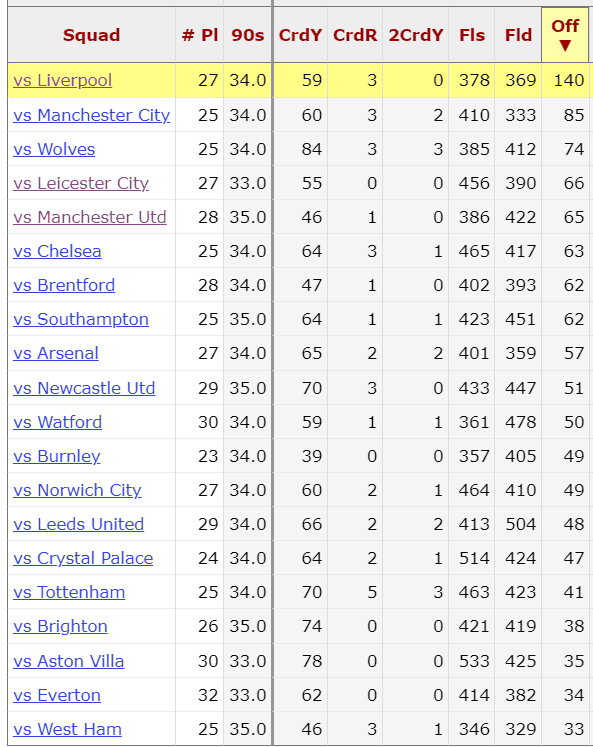
The image below is from the league game at the Etihad, the ball comes out to Walker on the halfway marker after a City freekick. The Liverpool players all push up immediately leaving all the Man City players (5) in an offside position as Walker crosses the ball to the left wing.
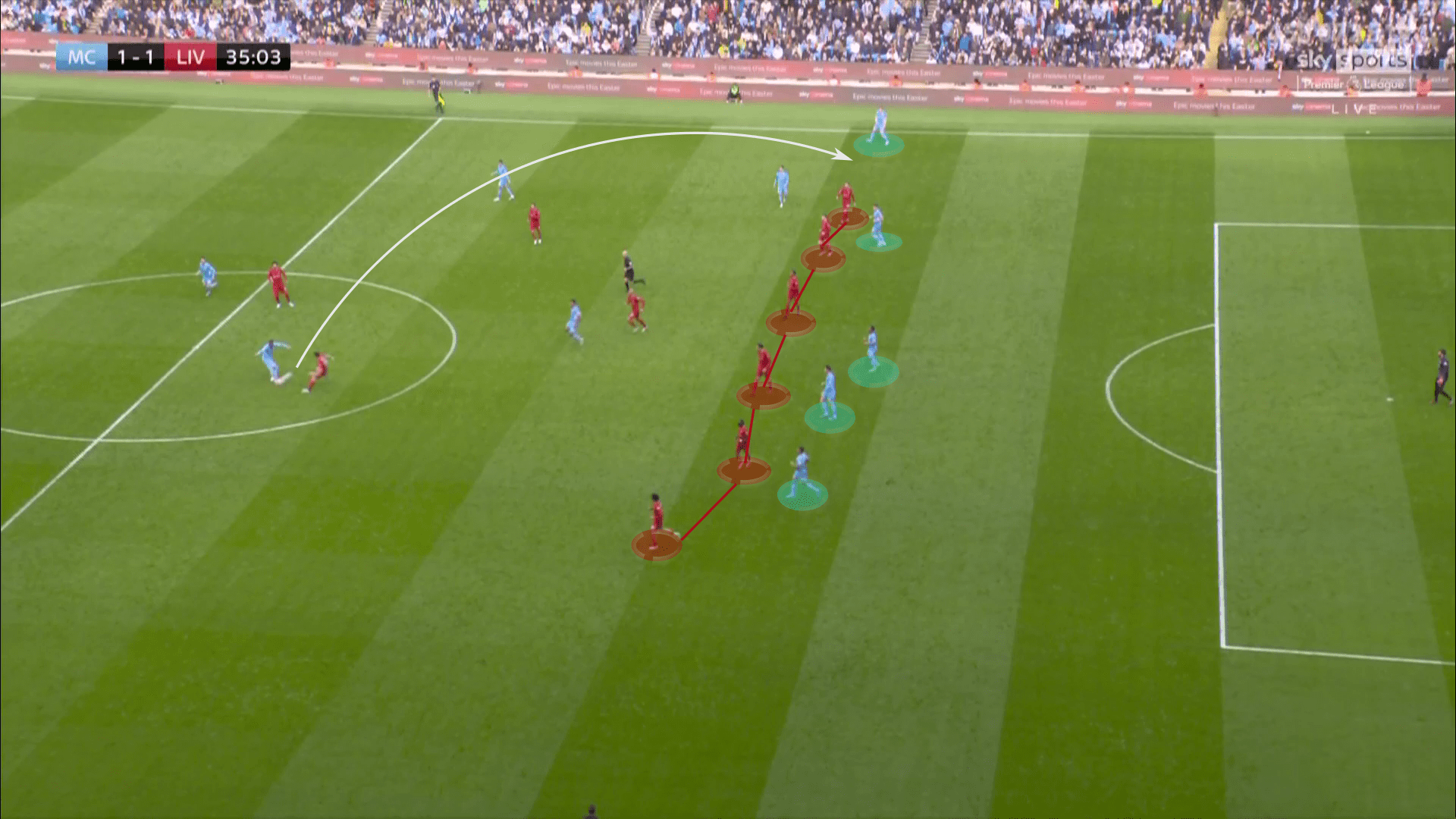
The elite organization and recovery speed of Liverpool’s defenders allows them to get away with it time and time again. “The first reason [why they play a high line] is that they want to press high to keep their team compact.” – said Jamie Carragher on Monday Night Football. “This high line in terms of high turnovers ending in shots on goal, Liverpool have more shots than anyone in the Premier League and have double the amount of goals. That’s what they gain there.”
Van Dijk and Matip always look to push up near the halfway line. It makes the team more compact and gives less spaces for opponents to play through. They rely on their speed to defend balls over the top and for Alisson to sweep up when required. Alisson has faced 47 1v1 situations in the league this season, the most of any goalkeeper. The Brazilian shot-stopper has a +7.8 expected saves from these situations, meaning Liverpool should have shipped in an extra 8 goals had it not been for his heroics.
Here, Leeds have the ball and have escaped Liverpool’s press. Liverpool’s defenders are making their way back from the halfway line to keep up with the Leeds attackers.
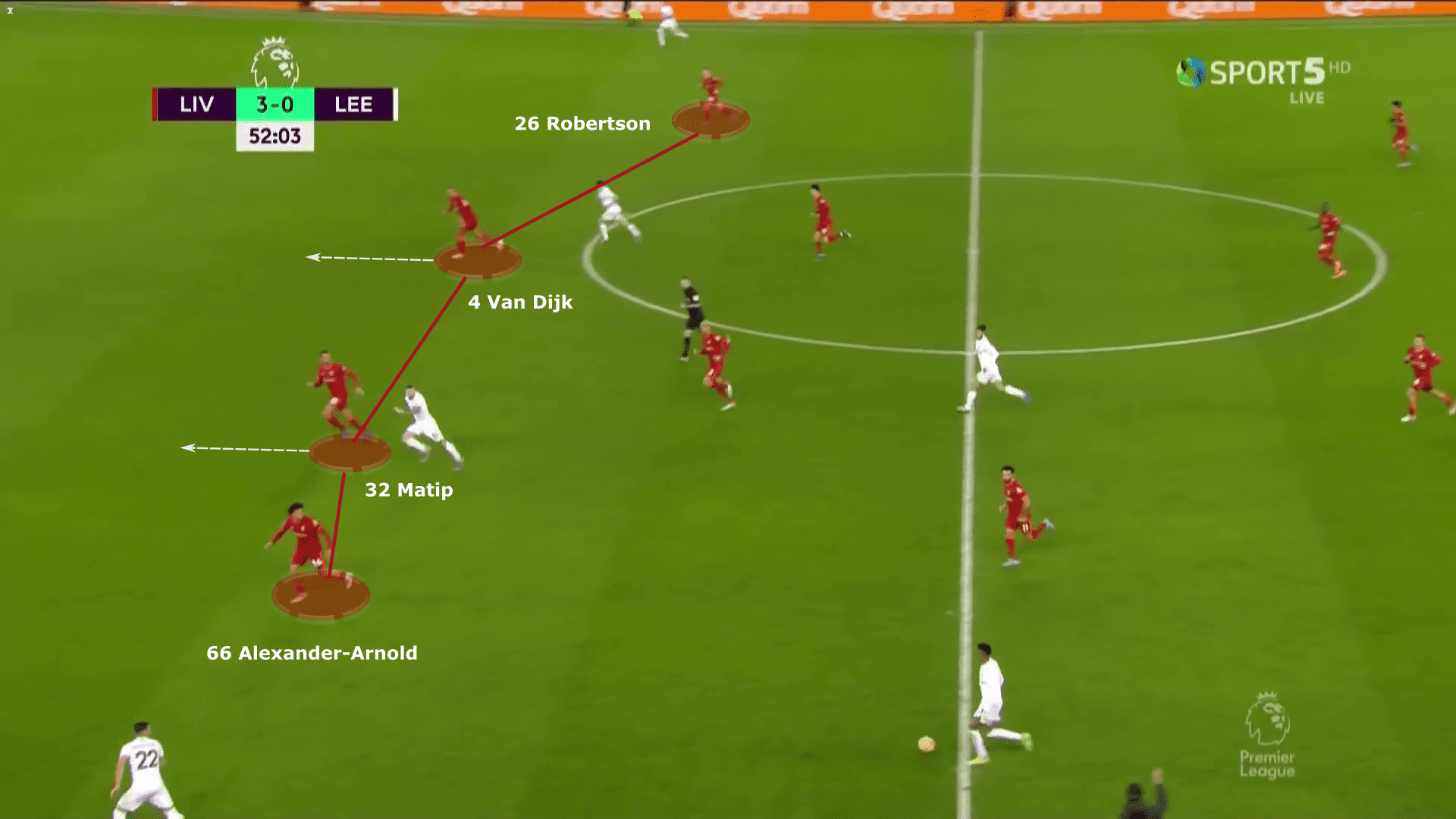
As soon as Firpo looks to play that ball in behind, Matip and Van Dijk completely stop in their tracks for a split second, catching the attacker in an offside position.
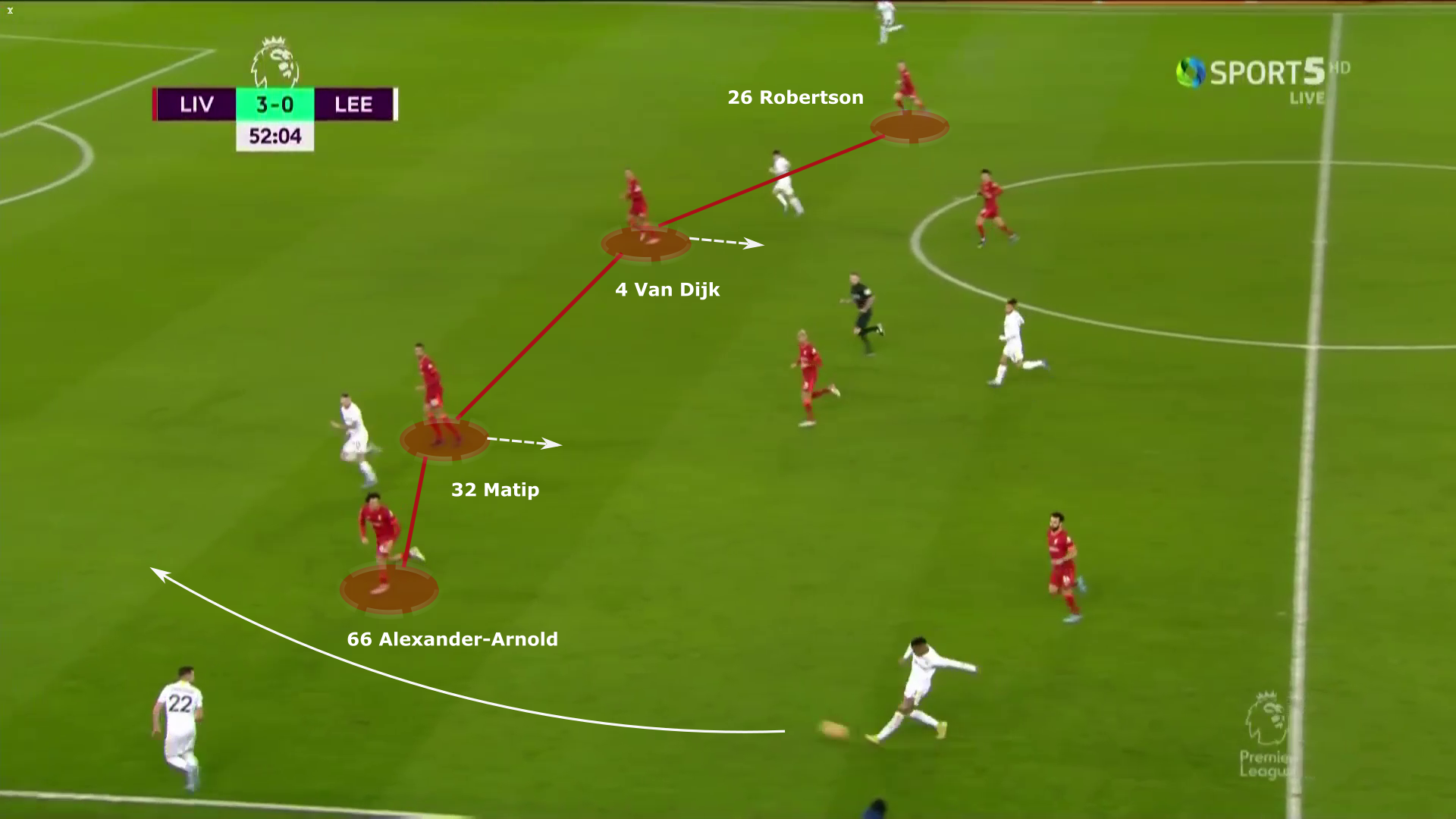
In this example, Liverpool are playing Norwich in the FA Cup with a second-string defense. Norwich win the ball back and the Liverpool midfielders try to counter-press. The Reds are playing with a back four of Milner, Konate, Gomez and Tsimikas who are positioned very high up the pitch.
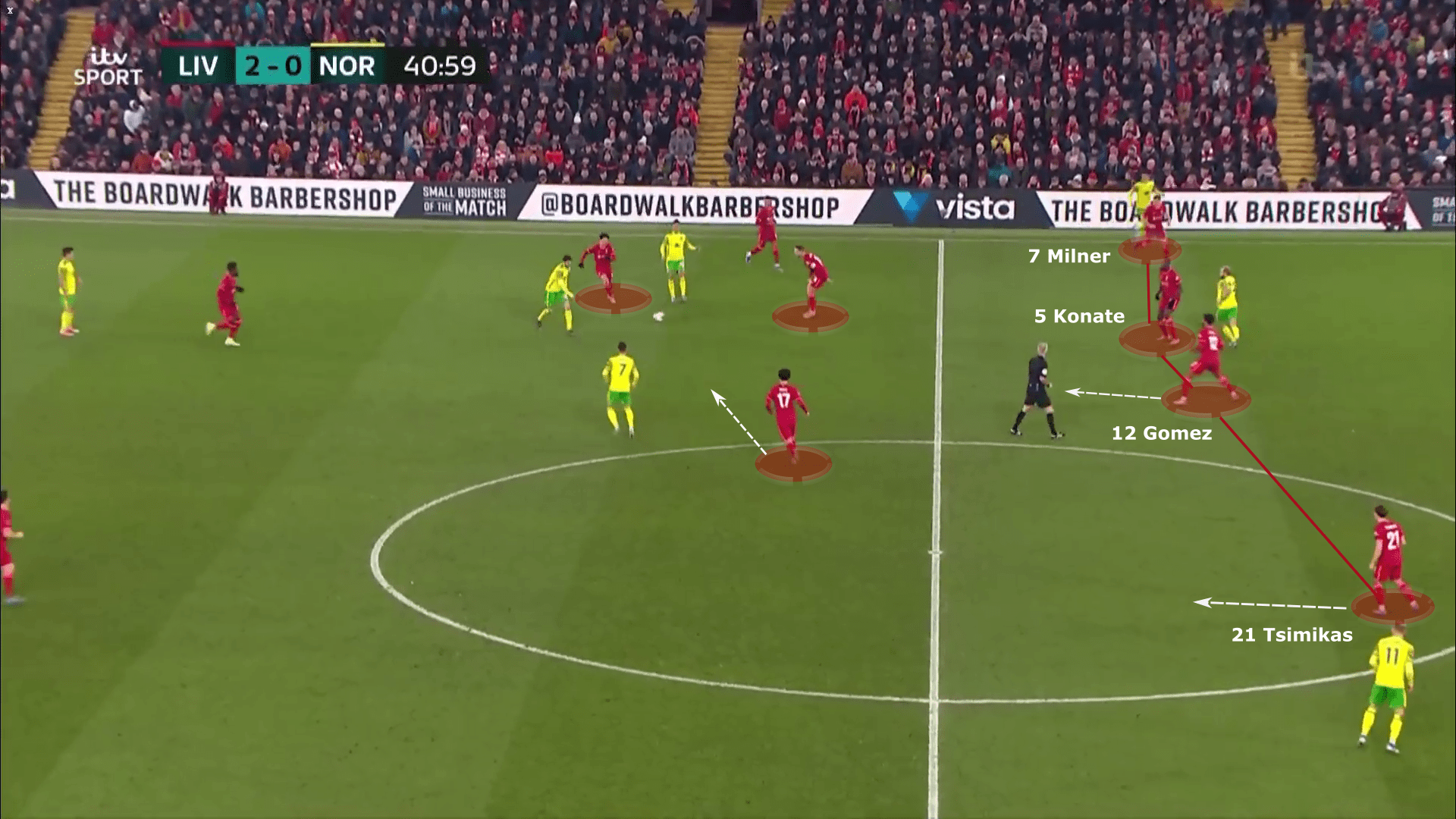
As the ball in behind is played, Gomez and in particular Tsimikas take a step forward and consequently the offside flag is raised. Body positioning is extremely important in these tight situations, especially with the VAR reviews and measurements taking place.
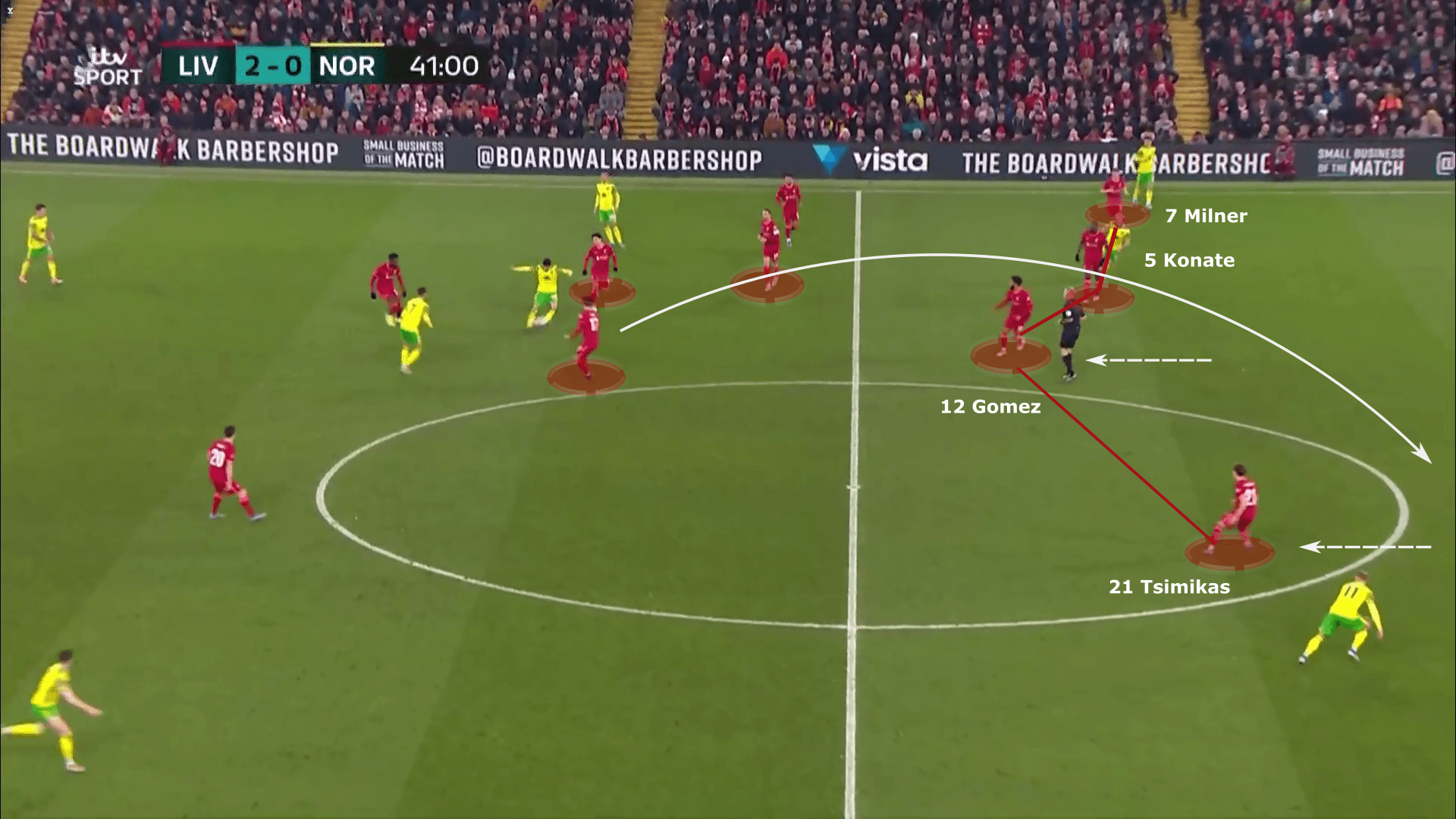
The Van Dijk effect
When Liverpool paid a club-record £75million to bring Virgil Van Dijk to Anfield, they hadn’t conceded fewer than 40 Premier League goals in a single season since 2009/10. In Van Dijk’s first season with Liverpool, the goals against total dropped to 38. In his first full season with the club, they had the best defensive record in the Premier League having conceded just 22. When the Reds claimed their first title in 30 years, they once again had the best record in the English top-flight, allowing just 33 goals against.
Since his arrival, the Dutchman has been a breath of fresh air and developed into one of if not the best centre-backs in the league. His leadership, physicality, aerial dominance and aura brought a sense of calm and confidence to a previously chaotic back four. He has been critical to implementing Klopp’s defensive tactics as well as being an integral part of building up fast attacks with his long-range passes to the front three.
Van Dijk’s record at Anfield in the Premier League is just staggering: 63 games played, 55 wins, 8 draws and 0 losses. Last season, when he suffered that ACL injury in the Merseyside derby ruling him out for the season, Liverpool suffered terribly, and his absence had an effect on the entire team.
When he has played at Anfield in the league, Liverpool have kept 34 clean sheets and conceded just 39 goals. That’s an average of just 0.65 goals against per game.
Without Van Dijk present, the Reds have lost six of their 18 home games in the Premier League since his signing, resulting in a loss ratio of 33.3%.
Joel Matip deserves praise here as well, he was also injured for the most part of last season and his return to full fitness this term and being nearly an ever-present in the league has vastly contributed to Liverpool’s solid defense. He quietly goes about his business but is one of the most underrated centre-backs in the league when fit, fizzing balls between the lines and injecting a burst of pace into the build-up.
With Liverpool’s perennially high line, Van Dijk and Matip’s recovery pace is equally pivotal, holding the key to the press while enabling the full backs the freedom to bomb on. In Van Dijk’s absence last season, Alexander-Arnold looked to have suffered the most. He did not have that security behind him and got exposed defensively on several occasions.
In addition to Van Dijk’s signing, Alisson and Fabinho’s arrivals have had a significant impact on the team. The Champions League and Premier League triumphs would not have been possible without the Brazilian pair.
Below is the average attacking positions of Liverpool prior to Van Dijk’s arrival compared to this season with Fabinho’s position as a shield to the centre-backs a key factor as well. “We want to keep a high line because we know we can win the ball up high, and it’s the risk you have to take,” Van Dijk said. The presence of the pair allows the full-backs to take higher positions up the pitch and play as wingers, with Mane and Salah tucking inside.
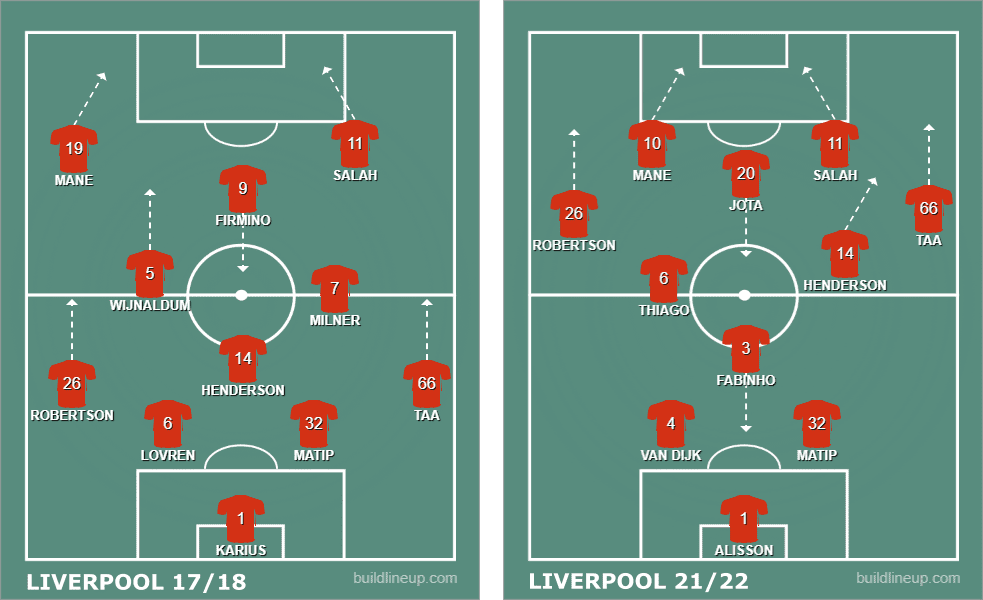
Van Dijk’s 1v1 defending and recovery pace make him stand out from other centre-backs. In the league fixture at home to Arsenal, Smith Rowe attempts a through ball in behind to Aubameyang.
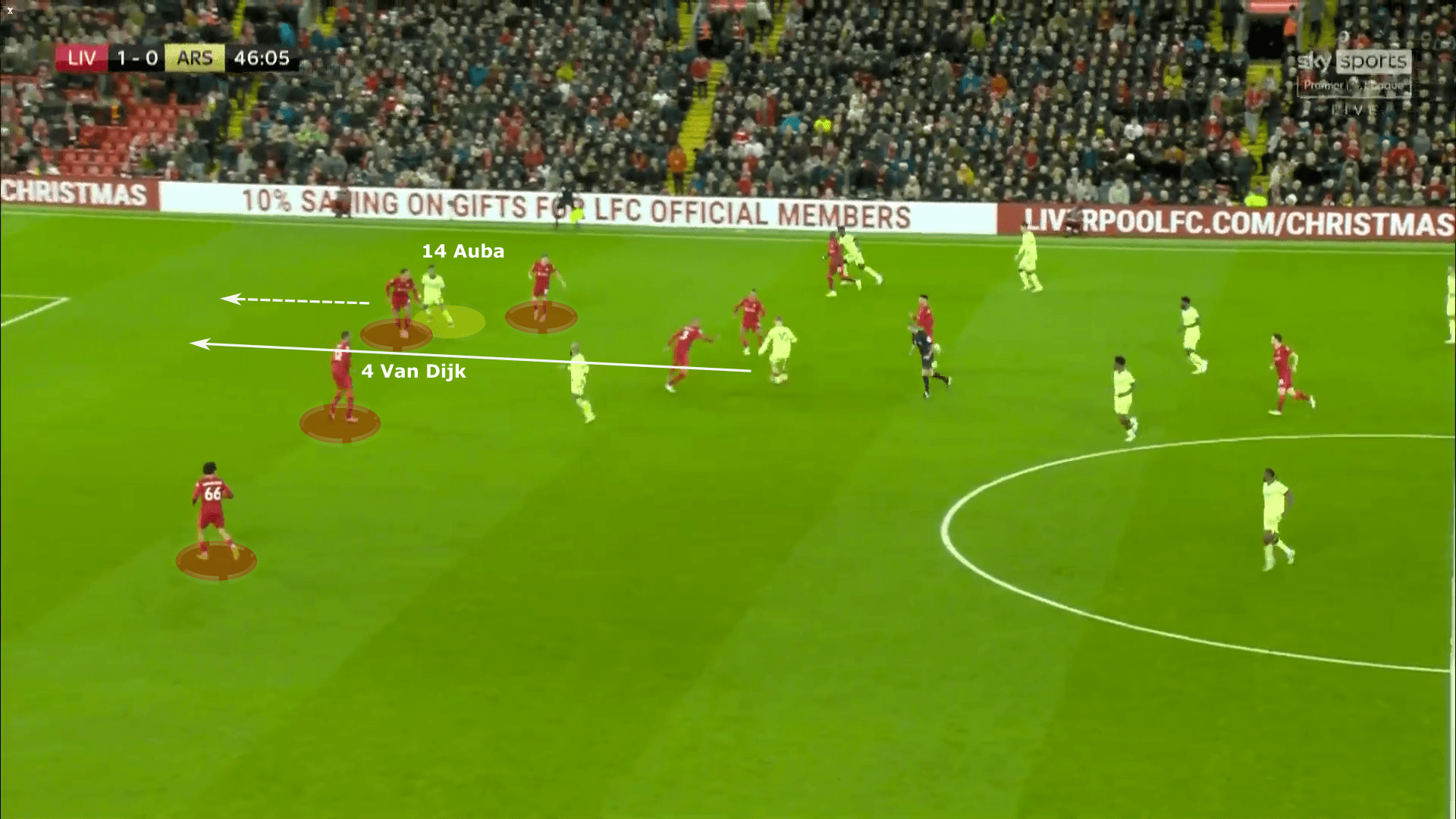
Van Dijk has the timing and pace to be able to match Aubameyang, one of the quickest strikers in world football, and make the tackle to clear the ball out of play.
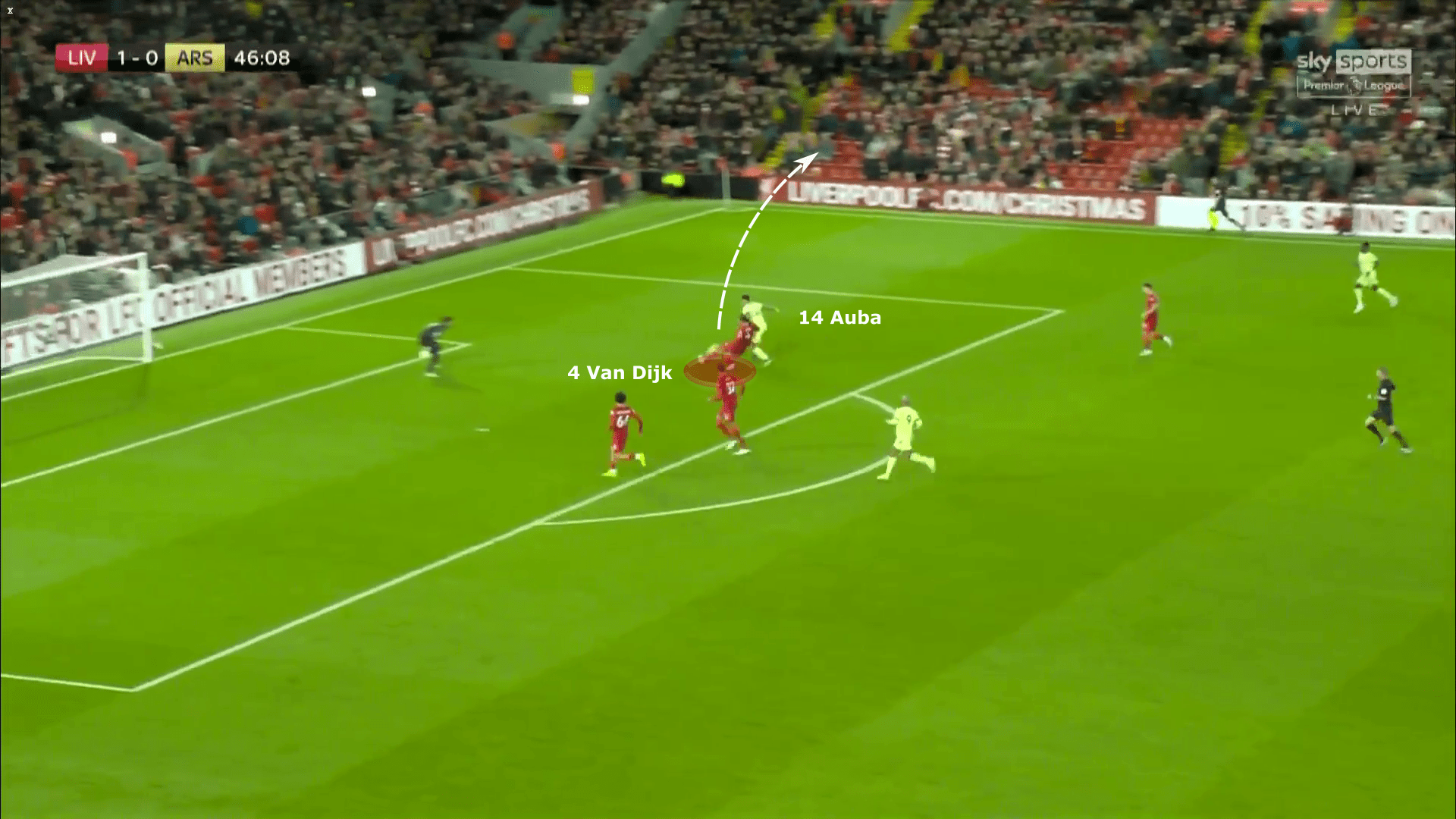
Another example of Van Dijk’s importance in Liverpool’s high line was demonstrated against Leeds United. Dallas is in possession and pings a steep ball in between the central defenders towards Raphinha. The home side are cut open and Raphinha thinks he’s through on goal.
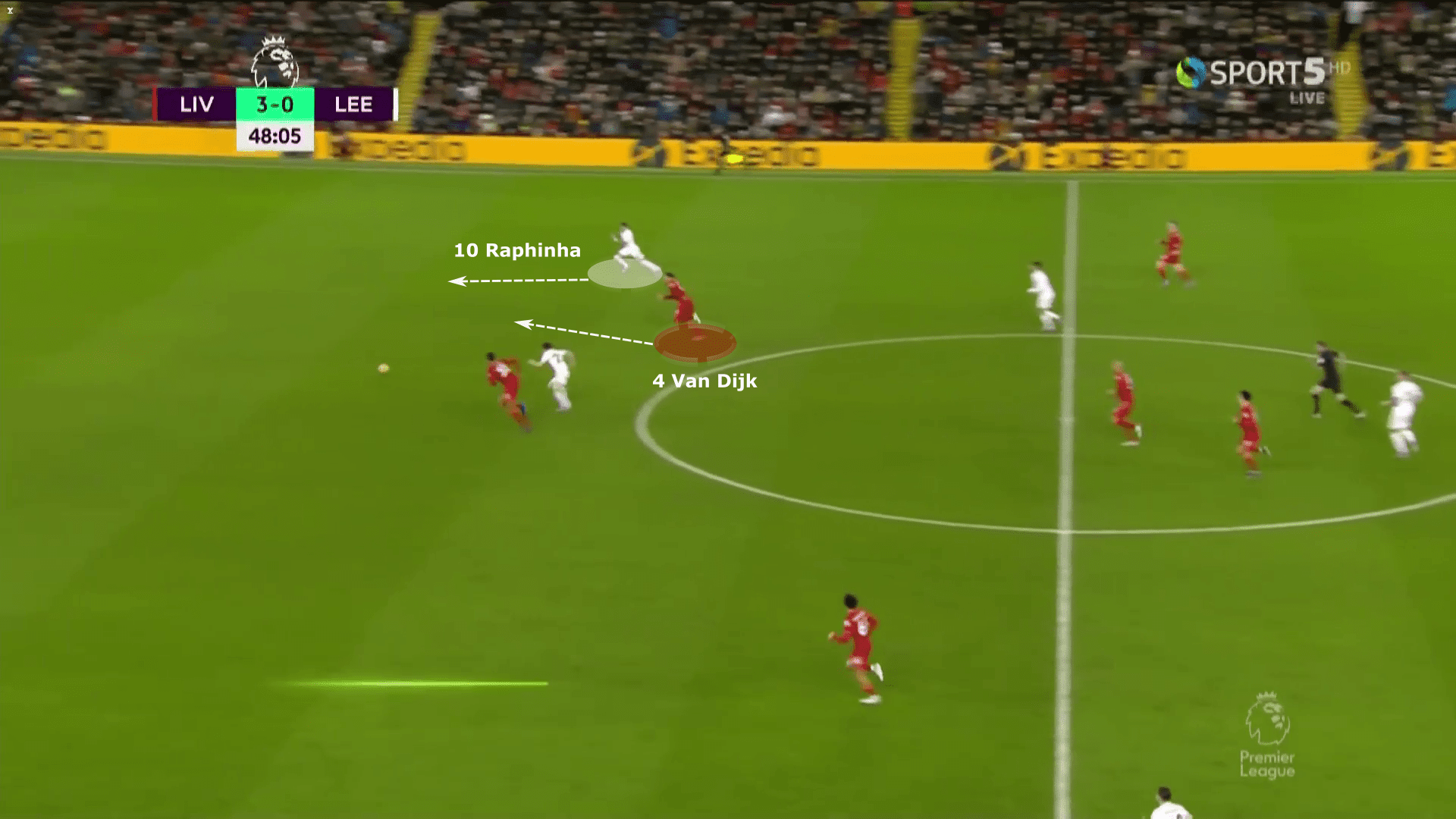
But Van Dijk’s recovery pace is unbelievable at times, as he sprints back and makes a vital interception to deny Leeds the opportunity.
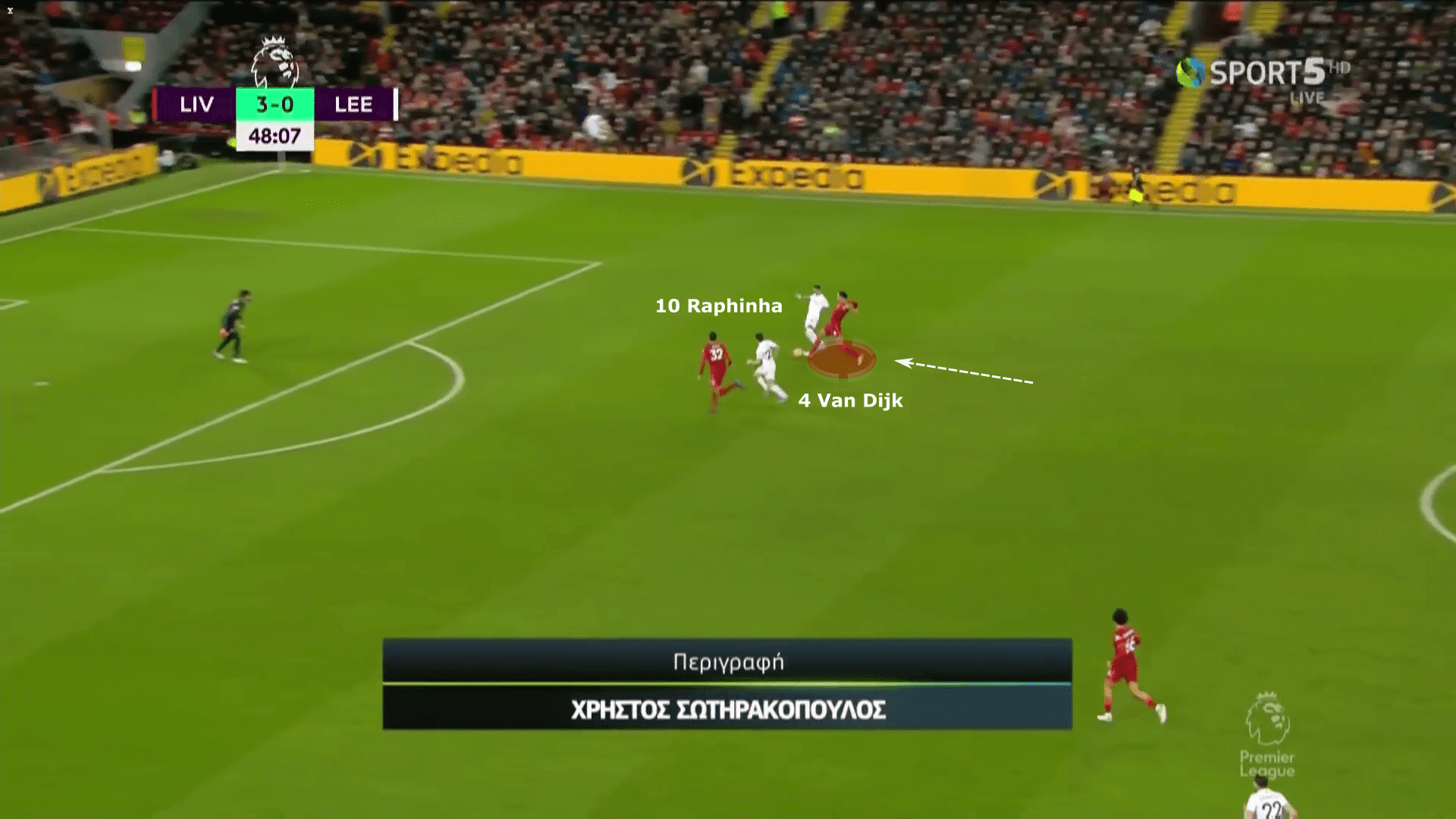
Conclusion
“Attack wins you matches, defense wins you titles.” Fortunately for Liverpool, they excel in both departments. In Klopp’s side, one depends on the other, they are intertwined. Liverpool are the highest-scoring team in the league with 86 goals and have only conceded one more goal than league-best Man City, 22 to 21. They have only failed to score in one game and have kept the most clean sheets (21).
What is so important this season compared to last is the availability of the first-choice defenders throughout the whole season. The preferred back four of Alexander-Arnold, Matip, Van Dijk and Robertson have all seen more than 2,000 minutes of Premier League football this season. The next best is Konate with 720 minutes, whose signing has provided Klopp with the necessary cover, particularly in the cup competitions, and in hand helped Matip stay fit and available. To put that into perspective Matip and Van Dijk played 691 and 370 minutes of league football last season respectively.
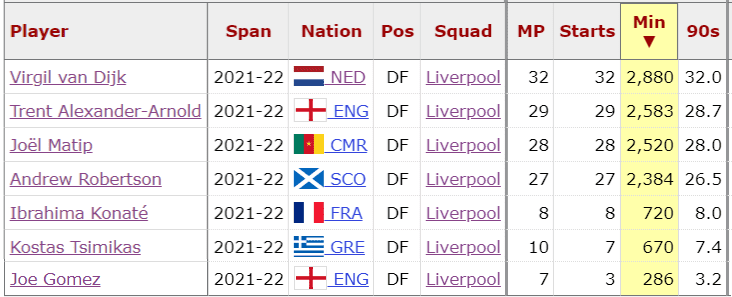
This compact, suffocating defensive structure has proved to be the catalyst for Liverpool’s resurgence. Their progress in every competition means the team will have played in every possible game on the calendar come the end of the season. Outrageous!
Last night’s victory at Villarreal saw Liverpool reach their third Champions League final in five years. They are breathing down City’s neck in the league and have an FA Cup final to contest against Chelsea at Wembley.
Liverpool’s quadruple hopes rest on their key players staying fit.
Will it be a historic end to the season for Klopp’s men?




Comments